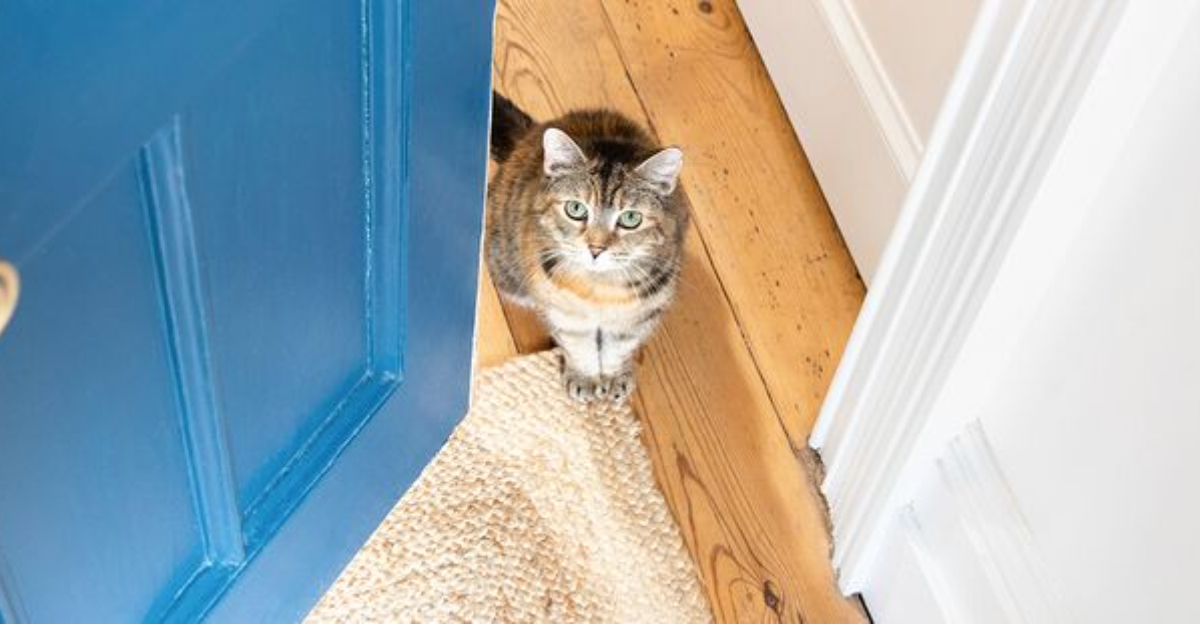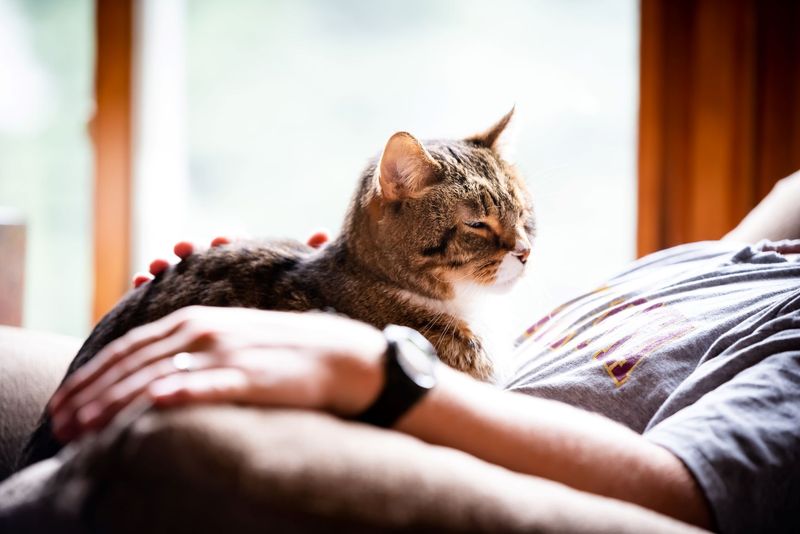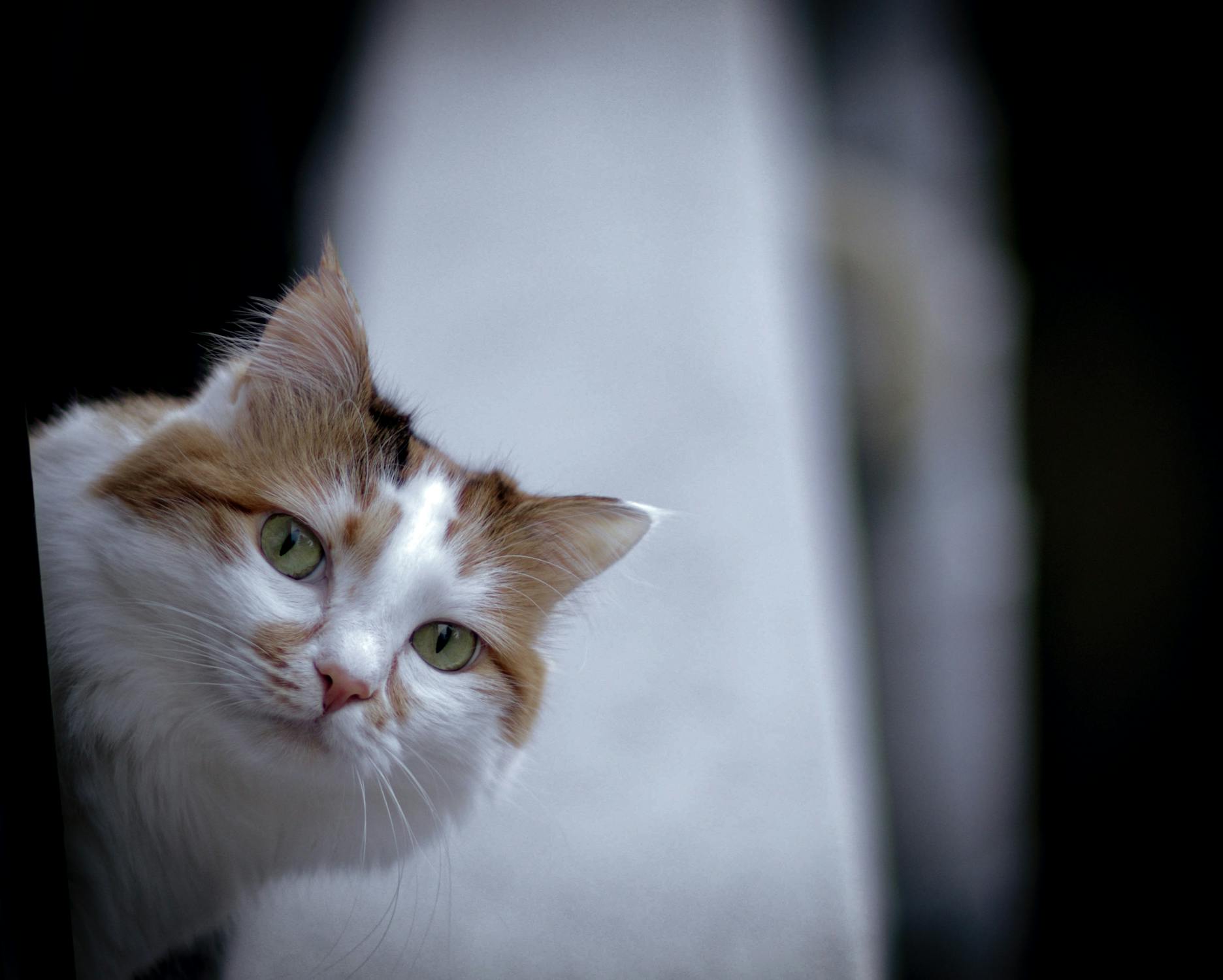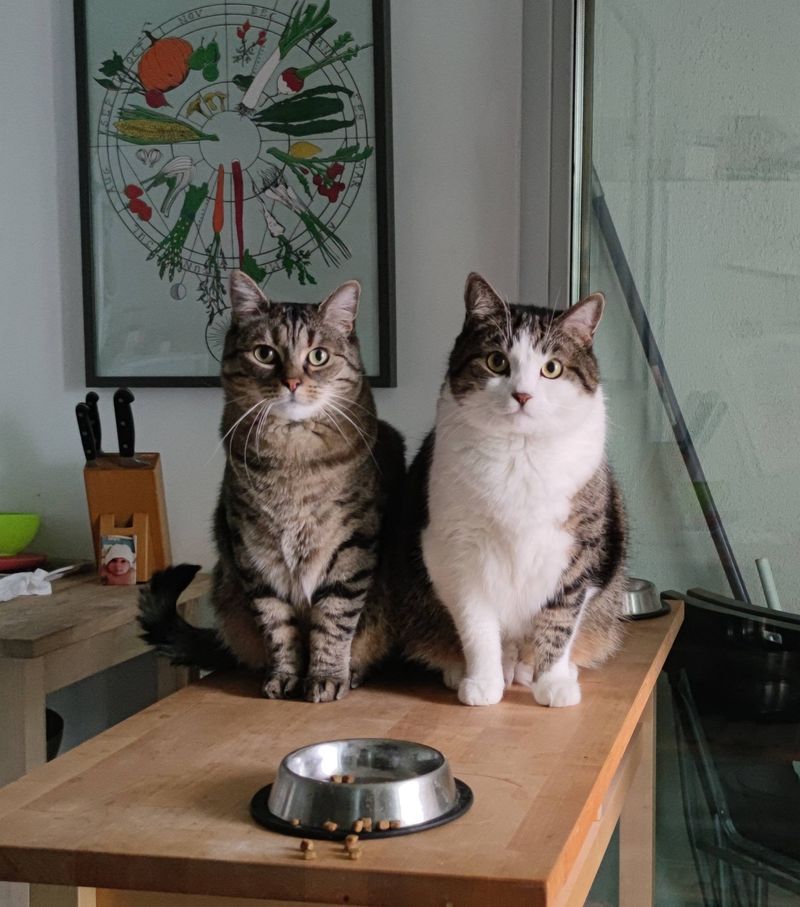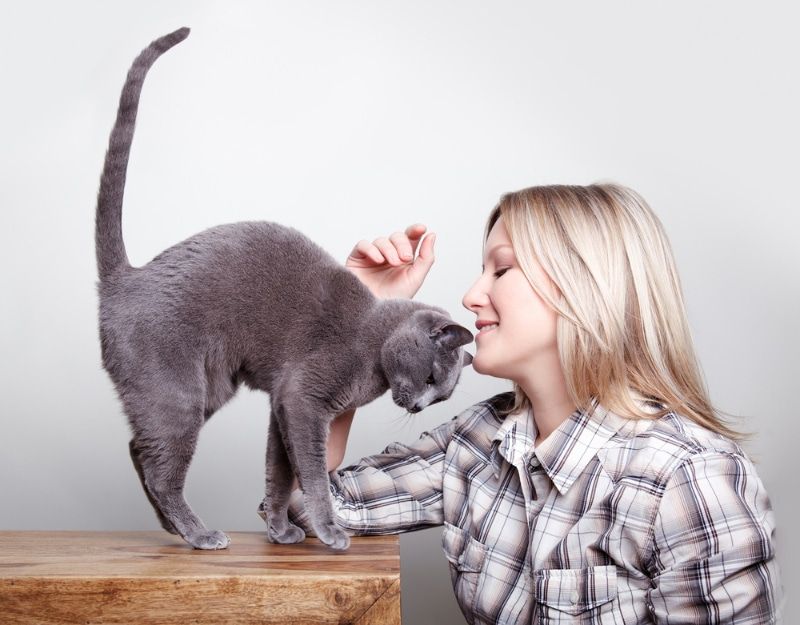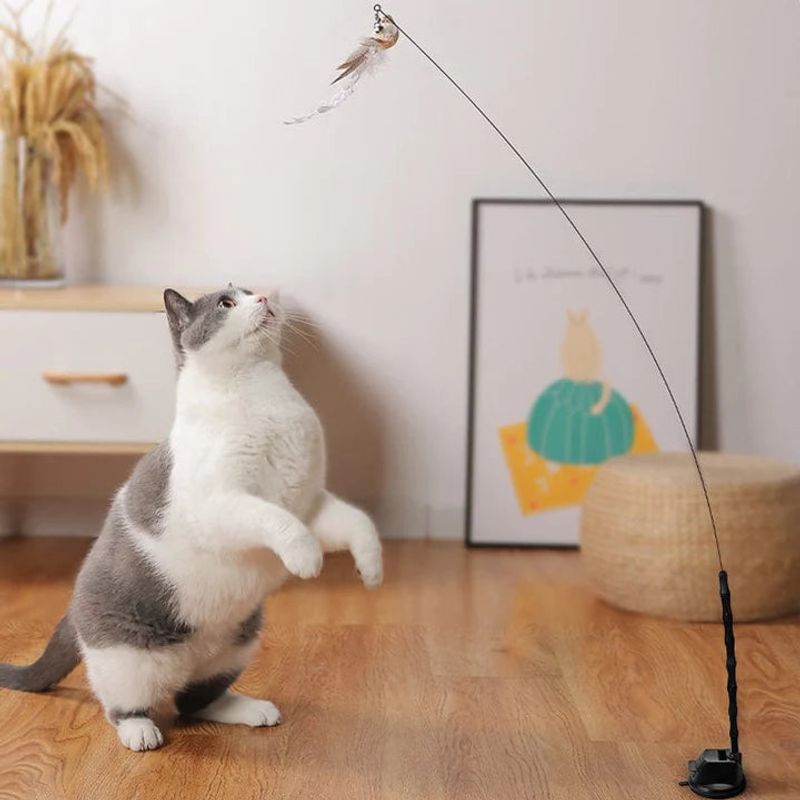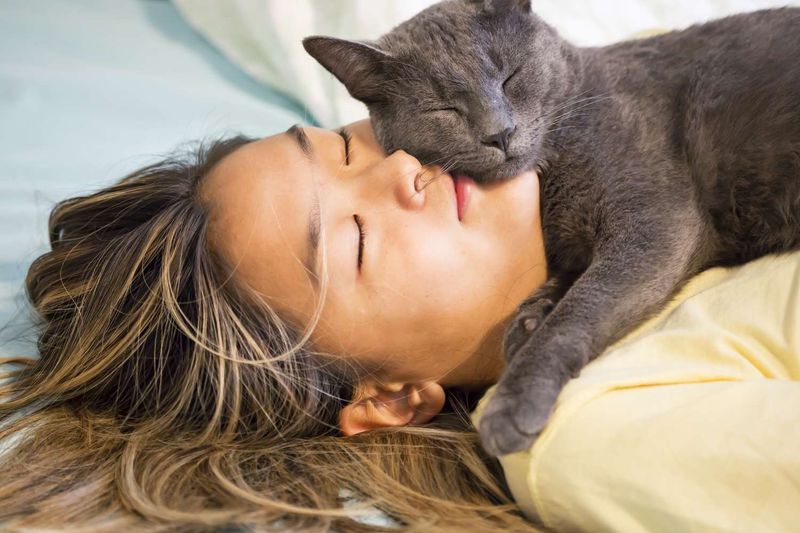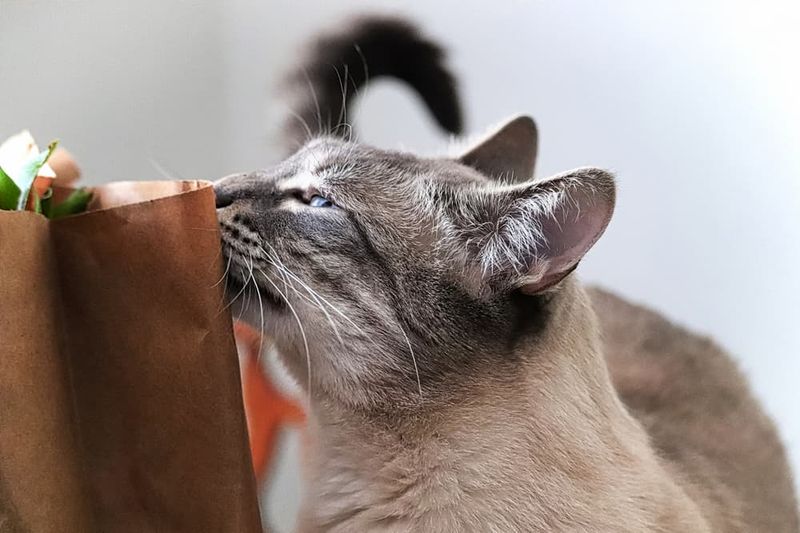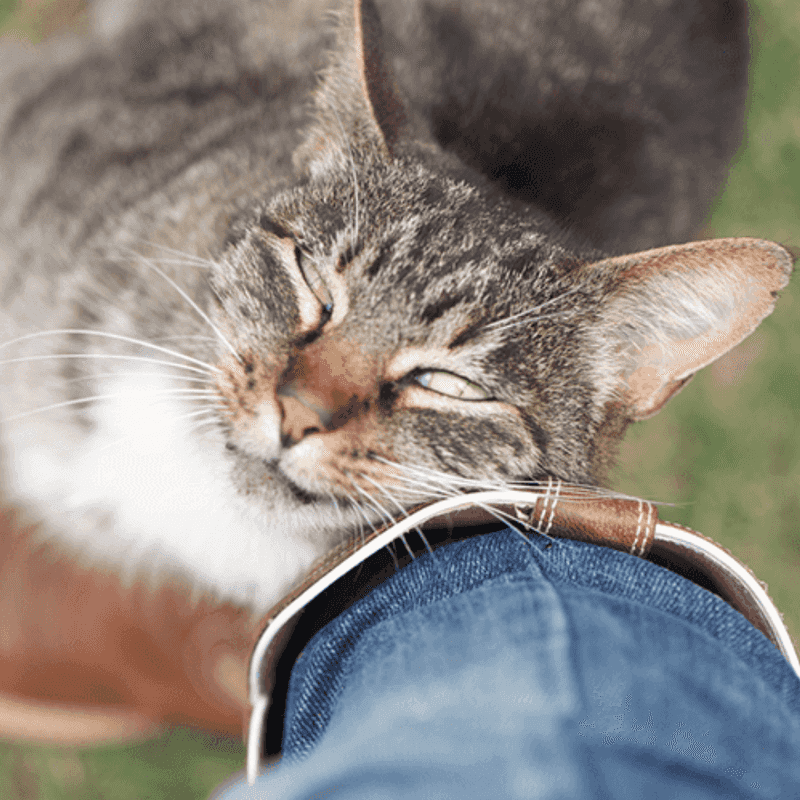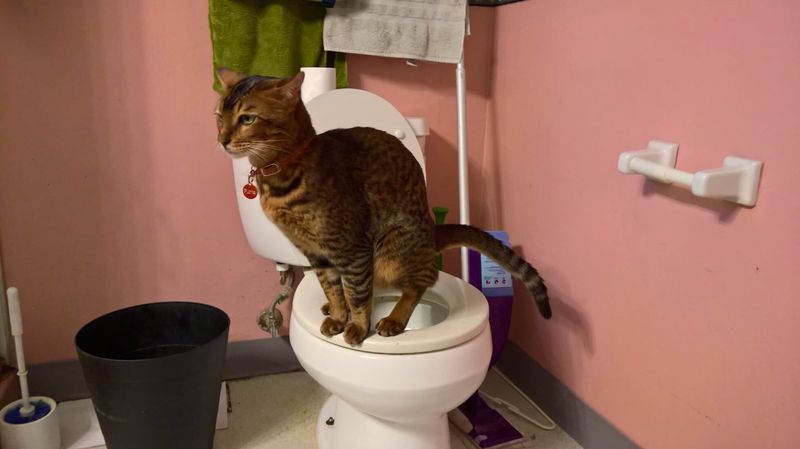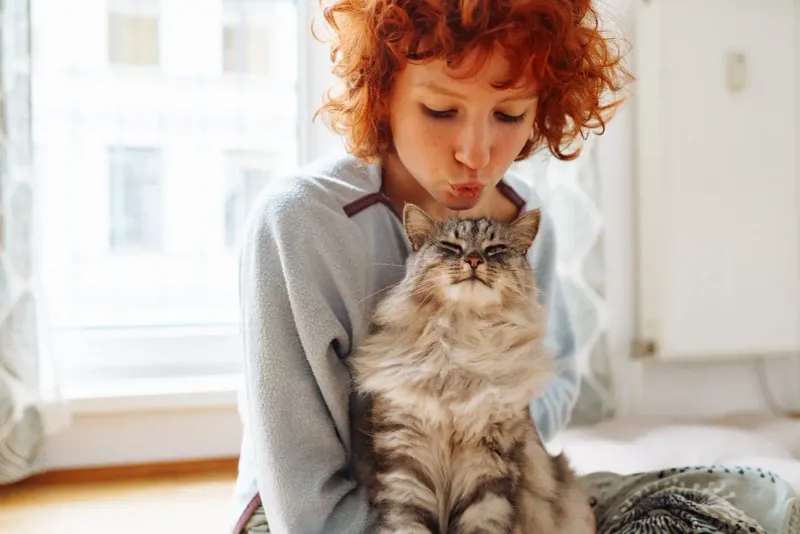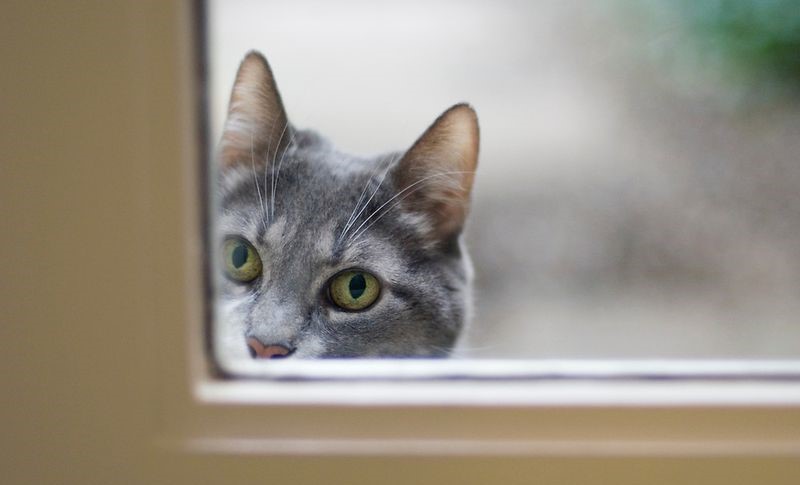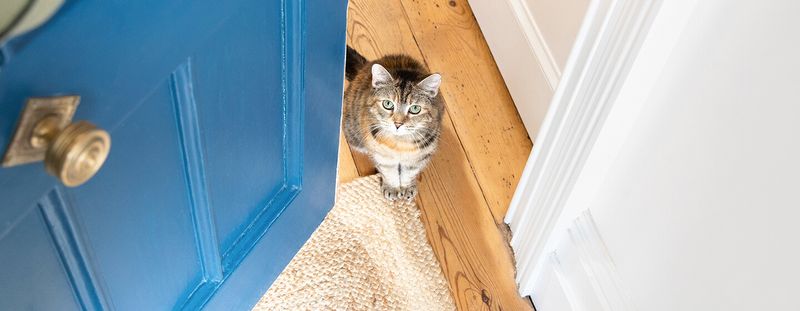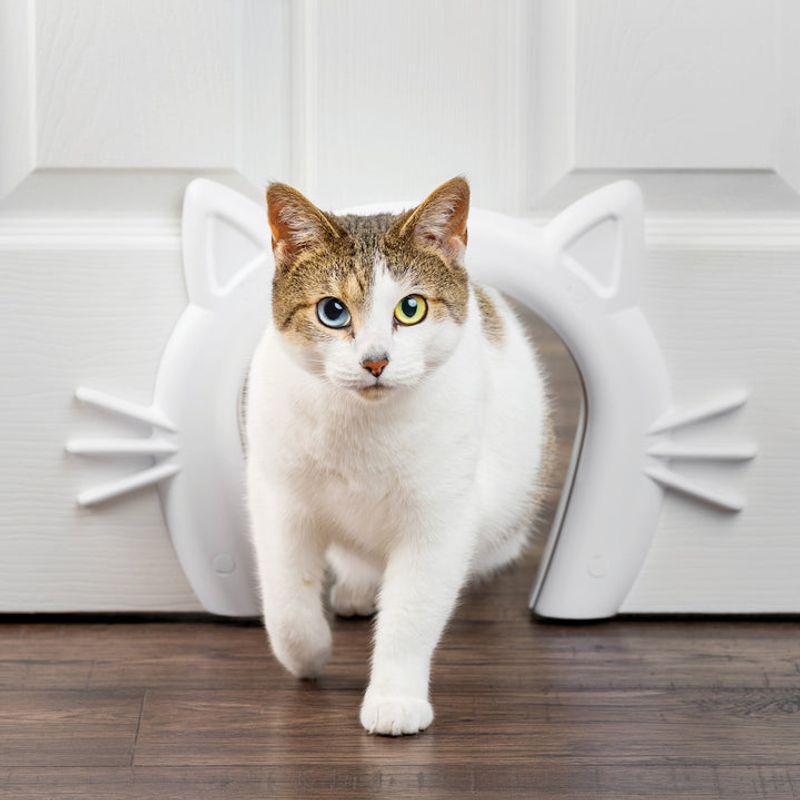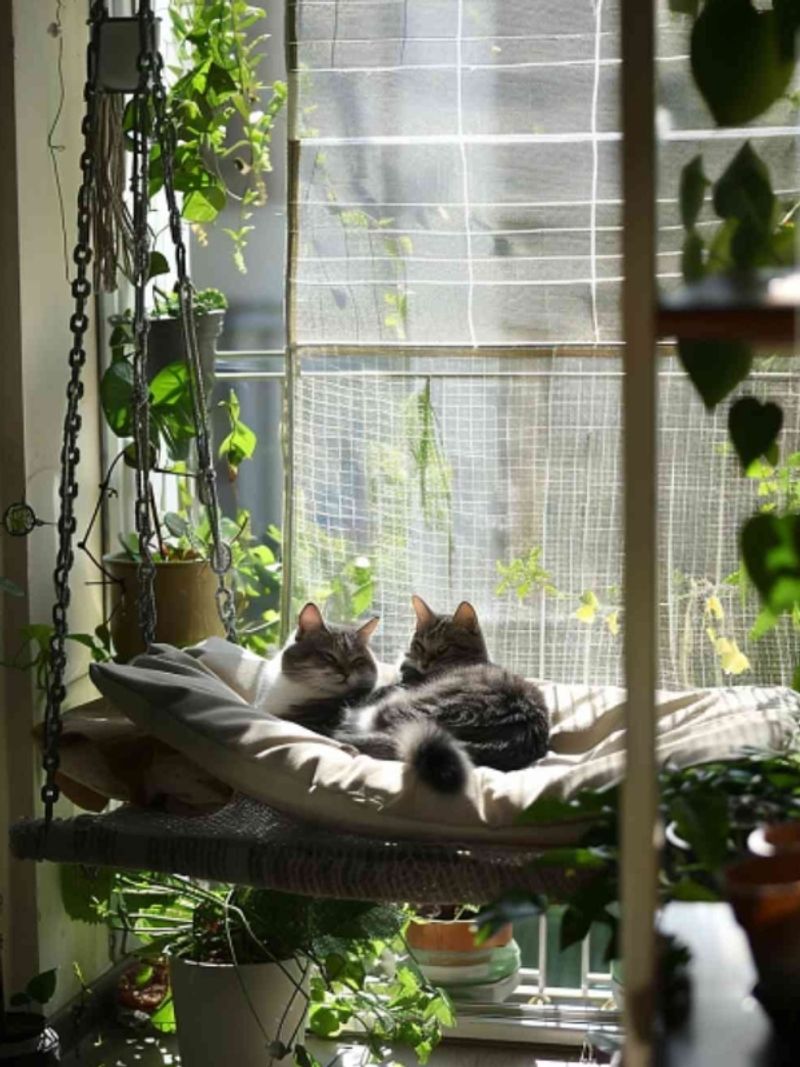📖 Table of Content:
- 1. They Love You
- 2. They’re Curious
- 3. You’re Their Food Source
- 4. They Want Attention
- 5. They’re Bored
- 6. They Feel Safe With You
- 7. They Like Your Smell
- 8. They’re Marking Territory
- 9. They’re Copying You
- 10. They’re Anxious Alone
- 11. They Like Your Routine
- 12. They’re Hoping for an Open Door
- 1. Use Distraction Before You Open the Door
- 2. Create a “No-Go Zone” Near the Door
- 3. Build a Cat-Friendly Space Inside
Have you ever noticed that no matter where you go—bedroom, kitchen, bathroom—your cat is right there, like a fuzzy little shadow? It’s a behavior that can feel both flattering and a little overwhelming, especially when you’re trying to enjoy a few minutes of privacy. But rest assured: you’re not alone, and your cat isn’t weird—just wonderfully feline.
Cats follow their humans for a whole mix of reasons that range from pure love to sheer boredom. Some of their motivations are rooted in instinct, while others stem from habit, curiosity, or even anxiety. Understanding why they do this is key to helping them feel secure and fulfilled without always being underfoot—or sneaking out the door the second it opens.
To help you get to the bottom of your cat’s clingy behavior, we’ve broken it down into 12 possible reasons they might be your constant companion. After that, we’ll give you 3 smart ways to stop them from bolting outside when you’re not looking. Let’s dive into the world of cat psychology—tail twitches and all.
1. They Love You
Love, plain and simple, is one of the strongest reasons your cat sticks by your side. They form strong bonds with their humans and express it through closeness and companionship. Even though they have a reputation for independence, many cats are deeply affectionate. Unlike dogs, they show love subtly—like quietly following you from room to room. Their constant presence is a gentle way of saying, “I trust you.” Cats will often sit near you or on you without demanding much, simply happy to be close. So if your cat always follows you, take it as a quiet love letter in paw form.
2. They’re Curious
Naturally inquisitive, cats want to know what you’re up to—especially if it involves a closed door. Anything unfamiliar, hidden, or routine becomes instantly more appealing in their eyes. The bathroom, for instance, transforms into a mysterious and forbidden zone the moment you close it. Your movements create subtle noise and smells that they want to investigate. They thrive on stimulation and novelty, so new activities are magnets. Their instinct is to investigate any change in their environment, and that includes your every move. Curiosity is a built-in drive that keeps them mentally sharp, even if it means interrupting your shower.
3. You’re Their Food Source
Food is a powerful motivator, and your cat knows exactly who fills the bowl. Every time you move, there’s a chance that food or treats might be involved. They’ve likely associated your movement—especially into the kitchen—with snacks or meals. Even if it’s not mealtime, they’re hoping for a bonus bite. Your routine reinforces this behavior when they’re fed on a schedule or after specific cues. Following you becomes part of their food ritual, and they’re not taking any chances. For your cat, sticking close could mean their next tasty reward.
4. They Want Attention
Sometimes, your cat just really wants to be noticed. Affection-seeking cats use proximity to get what they want—your touch, voice, or playtime. They may rub against your leg, meow softly, or just stare until you notice them. These are all signs that they’re craving interaction. Even negative attention, like shooing them away, can reinforce the behavior. Following you is their subtle (and sometimes not-so-subtle) way of asking to be seen. Cats who get regular affection often become more relaxed, but if they’re lacking it, they’ll pursue it.
5. They’re Bored
Without enough to do, your cat turns to you for entertainment. A bored cat will find something to do—and that “something” might be following you around. When there’s a lack of stimulation in their environment, your movements become entertainment. They treat you like mobile enrichment, watching and occasionally interacting. Cats that don’t have toys, climbing spots, or puzzle feeders may rely more on you. Wandering with you gives their day a bit of purpose and excitement. It’s not misbehavior—it’s a sign they need more to do.
6. They Feel Safe With You
When things feel uncertain, your cat sticks with what’s familiar—you. Security is a big deal for cats, and being near you offers that comfort. Your presence lowers their anxiety and helps them feel in control of their environment. They trust you to protect them from sudden noises, strangers, or unfamiliar scents. You become a mobile safe zone in their world. When something makes them nervous, their first instinct is often to find and follow you. Their clinginess is less about neediness and more about seeking calm.
7. They Like Your Smell
To your cat, your scent is one of the most comforting things in the world. Scent is everything in a cat’s world, and yours is their favorite one. Whether it’s your skin, clothes, or the spot on the couch you just left—they want to be where your scent is strongest. Bathrooms are particularly enticing because the scent is concentrated and personal. Your cat may rub against you or your things to mix your scent with theirs. This creates a shared identity in their eyes. Being near you is comforting because it reinforces their bond to you through familiar smells.
8. They’re Marking Territory
When your cat follows you, it might be part of their need to claim you. Territory matters to cats, and you’re part of theirs. They may follow you to maintain that connection and make sure you don’t wander into “unauthorized zones.” By rubbing against you or weaving through your legs, they’re claiming you and the space. This marking behavior is both social and territorial. In multi-pet homes, it’s more common, as cats compete to keep their scent dominant. It’s less possessive than it sounds—it’s just part of their natural behavior.
9. They’re Copying You
Your cat might be playing the role of your furry little shadow—on purpose. Some cats mimic their owners’ habits in surprisingly human ways. If you go to the kitchen, they go too. When you sit down, they settle nearby. This shadowing behavior comes from observation and social bonding. Cats learn patterns, and if they associate you with safety or reward, they mirror your activity. Copying is also a subtle form of play or learning.
10. They’re Anxious Alone
Being alone can make some cats deeply uncomfortable, especially if they’re used to company. Anxiety in cats often shows up as clinginess or shadowing behavior. If they’re scared of being alone, they’ll follow you to avoid that feeling. It can stem from past trauma, a recent move, or lack of stimulation. You might notice other signs too—meowing when you leave, destructive scratching, or clingy nighttime behavior. Their anxiety drives them to stay as close to you as possible. For them, your presence is the best way to feel safe.
11. They Like Your Routine
Your habits become their comfort zone—cats are creatures of rhythm. Routine is soothing for cats—it helps them predict their world. They watch you closely and align themselves with your habits, almost like tiny furry assistants. When you do something regularly (like brushing teeth or making coffee), they may follow just to be part of it. This builds shared rhythm and reinforces trust. Routines also signal important things, like feeding or snuggle time. If your schedule is stable, your cat will start anticipating your every move.
12. They’re Hoping for an Open Door
That front door is your cat’s gateway to the unknown—and they’re ready to make a move. Cats who’ve been outside before or are curious about the world beyond the door may see your exit as a golden opportunity. They’re not just following you—they’re scouting. That door is a potential gateway to adventure, smells, and sights. Even indoor-only cats are tempted by the unknown. Some learn that doors = opportunity and will always be on the lookout. Following you is strategic, not just affectionate.
1. Use Distraction Before You Open the Door
Right before you open the door, your cat should already be busy with something else. Offering your cat a fun or tasty distraction before you open the door can work wonders. Try engaging their mind with a treat puzzle or toss their favorite toy across the room. Timing is everything—do it just before you head out. By shifting their focus, they’ll be less likely to notice or care about the door opening. Over time, they’ll form a new habit of expecting treats instead of outdoor time. This method uses positive reinforcement to keep them safely indoors.
2. Create a “No-Go Zone” Near the Door
Keeping your cat away from the door takes more than yelling “no”—it takes strategy. Training your cat to avoid the door area takes consistency and gentle boundaries. Use harmless deterrents like motion-sensing sprays or double-sided tape to make the area unappealing. Whenever they approach the exit, guide them away calmly and redirect them to a preferred space. Reinforce the behavior with treats when they stay away. You can also use a verbal cue like “stay” to build recognition over time. With repetition, they’ll learn the door is off-limits.
3. Build a Cat-Friendly Space Inside
The best way to keep your cat from chasing adventure is to bring the adventure indoors. Sometimes, the best way to keep your cat from following you out is to make staying in more fun. Create a little indoor paradise: a cozy window perch, interactive toys, and climbing spots. A cat who’s stimulated and enriched inside won’t be as tempted to bolt. You can even simulate the outdoors with bird videos or a secure “catio.” Give them spots where they can explore safely while staying out of danger. Enrichment can turn an escape artist into a happy homebody.
